Keystone Bacteria: The Missing Link in Your Gut Health
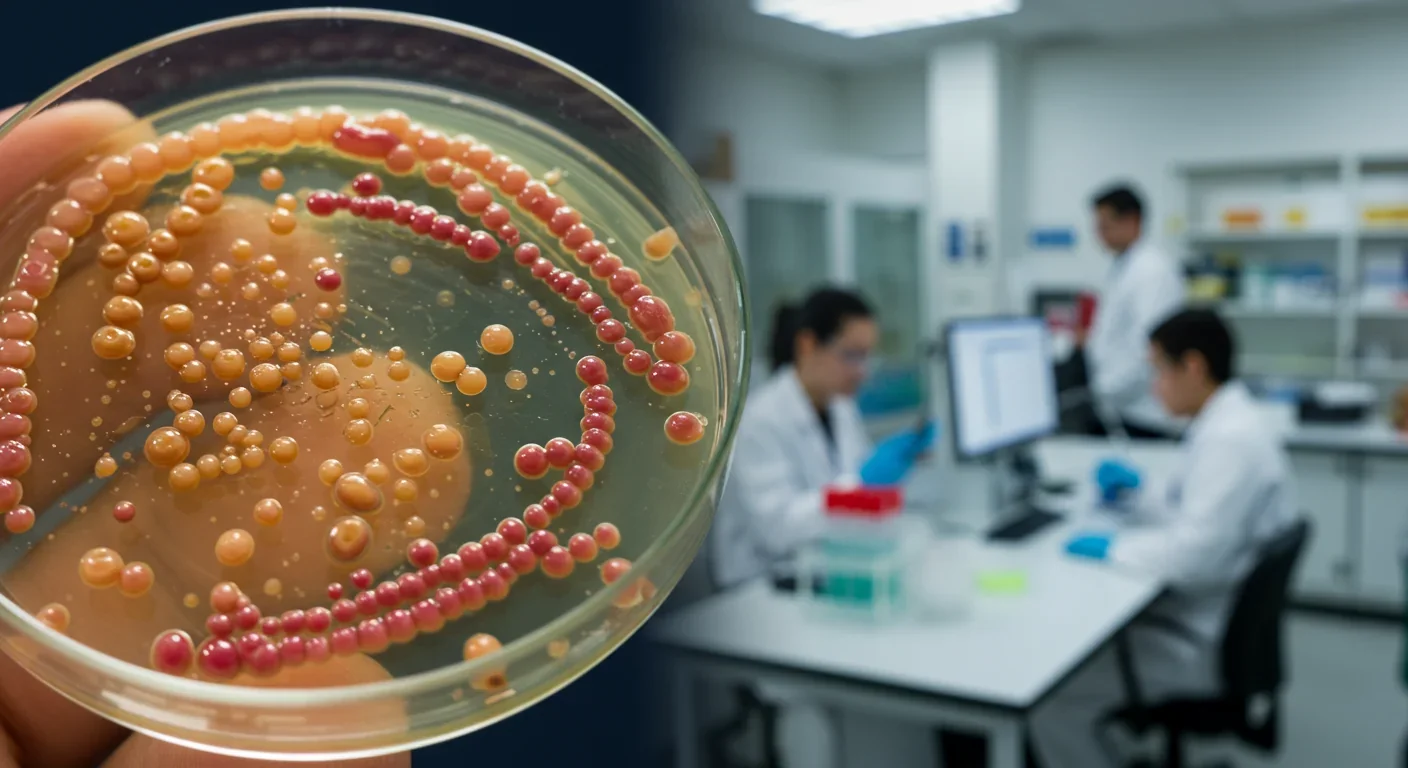
TL;DR: Photobiomodulation (PBM) uses specific wavelengths of red and near-infrared light (630–900 nm) to penetrate skin and stimulate mitochondria, boosting cellular energy production by up to 30%. Clinical studies show PBM improves skin rejuvenation, accelerates athletic recovery, reduces chronic pain, and may enhance mood and sleep—all without drugs or surgery. However, consumers must navigate dosing complexities, regulatory gaps, and device quality issues. With over 5,000 peer-reviewed studies and FDA-authorized applications emerging, PBM is transitioning from niche wellness tool to mainstream regenerative therapy, offering non-invasive healing but demanding informed, cautious adoption.
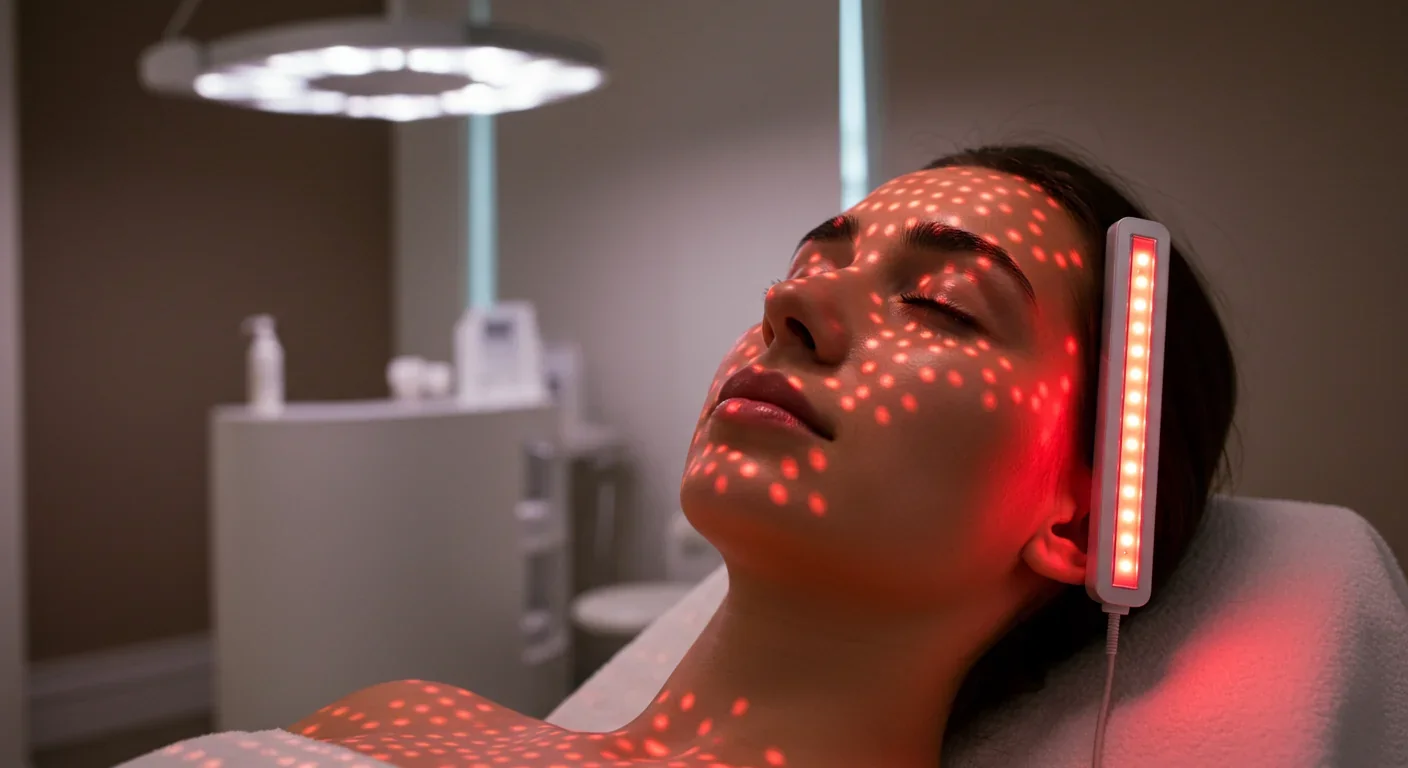
In a quiet laboratory in 2024, researchers made a discovery that could reshape how we think about healing. When they shone specific wavelengths of red and near-infrared light onto damaged cells, something remarkable happened: the cells' energy factories—mitochondria—suddenly kicked into overdrive, producing up to 13% more ATP, the fundamental currency of cellular energy. Within days, wounds healed faster, inflammation subsided, and aging skin began regenerating collagen at rates not seen in decades. This wasn't science fiction. It was photobiomodulation (PBM), and it's quietly revolutionizing wellness in ways most people don't yet understand.
Every second, trillions of chemical reactions occur in your body. At the heart of these reactions sits a molecule called cytochrome c oxidase (CCO), buried deep within your mitochondria. When red light at 660 nm or near-infrared at 850 nm penetrates your skin—traveling up to 50 mm deep—it doesn't just warm your tissue. It activates CCO, triggering a cascade of biological events: oxygen consumption spikes, electrons flow faster through the respiratory chain, and ATP production surges by 30% or more.
But here's where it gets fascinating. Red light also releases nitric oxide trapped in your cells, a vasodilator that improves blood flow and delivers oxygen exactly where your body needs it most. At the same time, reactive oxygen species (ROS)—often villainized as "free radicals"—are carefully modulated to signal repair pathways without causing damage. This precise orchestration of light, chemistry, and biology is why PBM works on everything from wrinkles to workout recovery.
Consider this: NASA scientists discovered that 940 nm near-infrared light can penetrate up to 23 cm below human skin, reaching muscles, bones, and nerves. This depth explains why professional athletes use red light therapy to slash recovery time by days, and why dermatologists increasingly prescribe it for collagen synthesis. Unlike lasers that cut or UV rays that burn, PBM operates in a therapeutic window between 630 and 900 nm—non-ablative, non-thermal, and profoundly regenerative.
Humanity's relationship with light therapy isn't new. Ancient Egyptians practiced heliotherapy, exposing wounds to sunlight to accelerate healing. In 1903, Danish physician Niels Ryberg Finsen won the Nobel Prize for treating lupus vulgaris with concentrated light. But the modern era of PBM began in 1967, when Hungarian scientist Endre Mester accidentally discovered that low-level laser light stimulated hair growth in shaved mice.
Fast forward to 2000: NASA funded groundbreaking research showing that LED-based red light accelerated wound healing in astronauts by 40%, solving a critical problem for long-duration space missions. By 2024, over 5,261 peer-reviewed studies on PBM had been published in PubMed, spanning applications from Alzheimer's disease to athletic performance. In November 2024, the FDA authorized LumiThera's Valeda Light Delivery System—the first approved PBM treatment for vision loss in dry age-related macular degeneration, marking a turning point for clinical acceptance.
Yet despite this momentum, most people still confuse red light therapy with tanning beds or dismiss it as pseudoscience. The gap between what research shows and what consumers understand has never been wider.
Let's cut through the hype. In 2025, a meta-analysis by Sun et al. pooled 11 randomized controlled trials with 569 participants and found statistically significant improvements: average weight loss of 3.54 kg, BMI reduction of 1.18 units, and waist circumference decrease of 7.28 cm. While these numbers are modest, they suggest PBM influences metabolism at a cellular level—likely through mitochondrial ATP enhancement rather than "fat vaporization," a claim with zero physiological plausibility.
For skin rejuvenation, the evidence is stronger. A 2007 randomized, double-blind study treated 112 participants with 633 nm red and 830 nm near-infrared LED light at 105 mW/cm² and 55 mW/cm², respectively. After eight sessions over four weeks, participants showed statistically significant wrinkle reduction and improved elasticity. Histologic analysis revealed a 31% increase in type-1 pro-collagen and an 18% decrease in matrix metalloproteinase-1 (MMP-1), the enzyme that breaks down collagen. Twelve weeks post-treatment, these benefits persisted—suggesting PBM doesn't just mask aging, it remodels tissue.
Pain management tells a more nuanced story. A 2022 review in the European Journal of Physical and Rehabilitation Medicine found evidence that LED or laser therapy helped with neck pain, osteoarthritis, and fibromyalgia, but lower back pain showed inconsistent results. The problem? Dosing protocols varied wildly—power densities ranged from 1 to 300 mW/cm², wavelengths from 660 to 1,064 nm, and total doses from 1 to 60 J/cm². Without standardized guidelines, comparing studies is like comparing apples to starships.
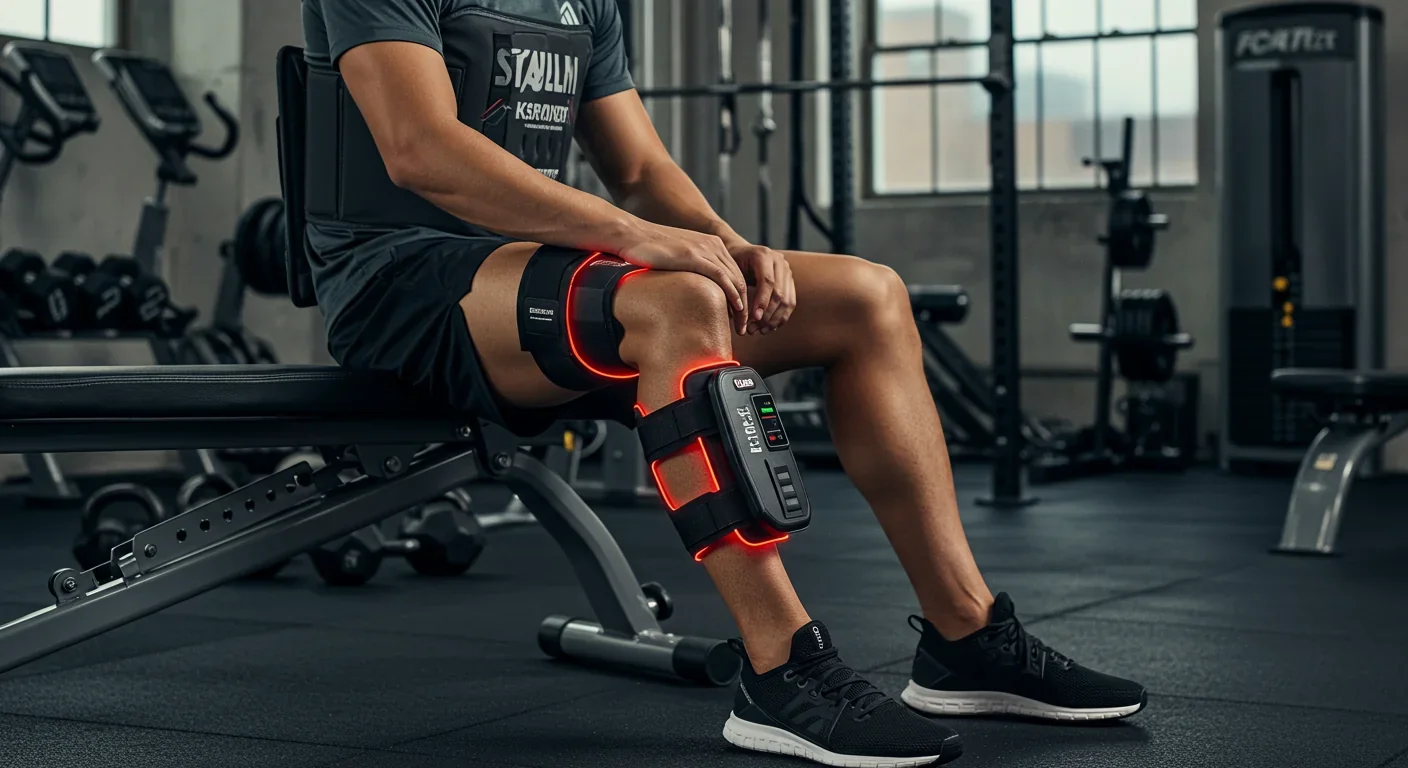
For athletic recovery, a study of 20 female athletes using whole-body red light (658 nm, 30 minutes nightly for two weeks) reported a 13% increase in performance and improved sleep quality via elevated melatonin and lower nocturnal heart rate. Yet a 2025 systematic review of five studies with 105 participants found that whole-body PBM improved sleep but showed no measurable benefits for exercise recovery or fatigue biomarkers. The takeaway? Localized PBM targets specific tissues effectively; whole-body application may be too diffuse to concentrate therapeutic doses.
Mental health applications are emerging. A 21-person double-blind RCT using 823 nm near-infrared light at 33.2 mW/cm² on the forehead for eight weeks produced statistically significant reductions in Hamilton Depression Rating Scale scores. Another case study of three patients with chronic low back pain receiving 85% NIR (850 nm) and 15% red (660 nm) at 100 mW/cm² reported not only pain relief but decreased depression scores. The mechanism? PBM reduces oxidative stress and inflammation, which are implicated in mood disorders, while potentially modulating neurotransmitter pathways.
The key to PBM's effectiveness lies in the biphasic dose-response curve—a concept borrowed from toxicology and hormesis. Imagine an inverted U-shape: too little light fails to activate cellular mechanisms, while too much triggers inflammation or tissue damage. The sweet spot sits in the middle, where photon energy precisely matches the activation threshold of CCO and other chromophores.
This is governed by two fundamental laws. The Grotthuss-Draper law (first law of photobiology) states that only absorbed photons produce biological effects—light must hit a chromophore to work. The Bunsen-Roscoe reciprocity law (second law) tells us that biological response depends on total photon dose (fluence) regardless of whether it's delivered quickly at high intensity or slowly at low intensity—up to a point. Beyond certain thresholds, the relationship breaks down, and more light doesn't mean more healing.
Practically, this means a device delivering 100 mW/cm² for 3 minutes (18 J/cm²) should produce similar effects to one delivering 50 mW/cm² for 6 minutes. But there's a catch: intensity matters for penetration depth. Near-infrared at 850 nm and 100 mW/cm² penetrates up to 50 mm into tissue, reaching deep muscles and joints. Drop the intensity to 20 mW/cm², and you'll need to increase exposure time dramatically—or accept shallower penetration.
Wavelength selection is equally critical. Red light at 630–660 nm targets the epidermis and upper dermis, making it ideal for collagen production, acne reduction, and surface-level wound healing. Near-infrared at 810–850 nm penetrates deeper, reaching muscles, tendons, and bones for pain relief, inflammation reduction, and athletic recovery. Devices combining both wavelengths—like the common 660 nm + 850 nm pairing—deliver synergistic benefits, treating both superficial and deep tissues simultaneously.
But wavelength precision matters. A Harvard Medical School dosimetry study found that 810 nm achieves the highest photon fluence in brain tissue across all age groups, making it superior to 1,064 nm for transcranial PBM despite 1,064 nm's longer wavelength. Why? CCO absorption peaks at 810 nm and declines beyond that. Meanwhile, wavelengths above 900 nm preferentially activate heat-sensitive calcium ion channels (TRP channels) rather than mitochondria, offering a different therapeutic mechanism altogether.
Just as the printing press democratized knowledge and the internet democratized information, PBM is democratizing regenerative medicine. A technology once confined to NASA labs and elite sports clinics now sits on bedroom nightstands in the form of handheld wands and LED panels. The global red light therapy market is projected to exceed $500 million by 2028, driven by aging populations seeking non-invasive anti-aging solutions and athletes chasing marginal performance gains.
Consider the industries being disrupted. Dermatology clinics that once relied on expensive laser resurfacing or chemical peels now face competition from $200 at-home LED masks. Physical therapy practices using ultrasound and electrical stimulation are integrating PBM for faster pain relief. Even mental health providers are exploring transcranial PBM as a non-pharmacological adjunct for depression and cognitive decline, potentially reducing reliance on SSRIs and benzodiazepines.
The workplace implications are equally profound. Imagine construction workers using portable PBM devices during lunch breaks to prevent chronic joint pain, or office workers with LED panels at their desks to combat seasonal affective disorder during dark winter months. Early adopters report using red light therapy prophylactically—not to treat disease, but to optimize baseline function, much like people take vitamins or meditate.
Culturally, PBM challenges our default assumption that healing requires pharmaceuticals or surgery. It reframes light—something we experience passively every day—as an active therapeutic agent. This shift mirrors broader trends toward biohacking, quantified self-movement, and personalized wellness. In South Korea and Japan, red light therapy cafes are emerging where customers pay by the minute to sit in LED cocoons. In Silicon Valley, biohackers stack PBM with intermittent fasting and cold exposure, treating their bodies as systems to be optimized rather than problems to be fixed.
Yet this democratization brings risks. The FDA classifies most red light devices as Class II medical devices, requiring 510(k) clearance but not rigorous approval. Clearance means a device is "substantially equivalent" to an existing product—not that it's proven effective for claimed uses. Many devices are marketed with wellness claims that exceed their regulatory clearance, toeing the line between therapy and lifestyle product.
The upside is staggering. For the first time in human history, we have a non-invasive, non-pharmacological intervention that targets cellular energy production directly. Consider these possibilities:
Skin rejuvenation without needles: A 2014 study by Wunsch & Matuschka demonstrated increased intradermal collagen density after 660 nm treatment, with effects persisting 12 weeks post-treatment. Unlike Botox, which paralyzes muscles, or retinoids, which thin the outer skin layer, PBM stimulates fibroblasts to produce new structural proteins. Users report clearer complexion, reduced hyperpigmentation, and smoother texture after consistent use—all without the downtime of laser resurfacing.
Pain relief without opioids: The CDC now lists low-level laser therapy among nonopioid therapies for pain management, recognizing PBM's potential to address the opioid crisis. While evidence for lower back pain remains inconsistent, studies on neck pain, osteoarthritis, and fibromyalgia show promise. One trial on knee osteoarthritis reported significant pain reduction with 810 nm light at 30 mW/cm², offering hope for millions suffering from degenerative joint disease.
Faster recovery for athletes: A 2018 systematic review by Vanin et al. found that red-near-infrared therapy improves exercise performance and recovery when applied before or after workouts. Mechanisms include reduced oxidative stress, decreased inflammation biomarkers (like creatine kinase), and enhanced muscle cell proliferation. Professional sports teams from the NBA to Premier League now integrate PBM into training regimens, and a NASA study showed that LED therapy accelerated wound healing by 40%—a finding with obvious implications for sports injuries.
Brain health and cognitive enhancement: Transcranial PBM is showing potential for neurodegenerative diseases. A 2025 study on APP/PS1 mice (an Alzheimer's model) using 808 nm light at 20 mW/cm² for six weeks reported improved spatial memory, reduced amyloid-beta plaques (by 28%), and decreased neuroinflammation. Human trials are underway, with early results suggesting mood improvements and increased frontal cortex blood flow in adults with mild cognitive impairment.
Sleep and circadian regulation: Unlike blue light, which suppresses melatonin and disrupts sleep, red light at night preserves or even enhances melatonin production. A study of female athletes using 658 nm light for 30 minutes before bed improved Pittsburgh Sleep Quality Index scores and correlated with a 13% performance boost. The mechanism? Red light keeps cortisol low and melatonin high, supporting natural circadian rhythms. Some users now replace bedroom lamps with red bulbs, using PBM as both therapy and ambient lighting.
Autoimmune modulation: Emerging research shows PBM alters immune cell behavior—macrophages polarize toward anti-inflammatory M2 phenotypes, T cell activity is modulated, and dendritic cell function shifts. A 2025 comprehensive review in a major journal suggests PBM holds promise as a non-pharmacological adjunct for autoimmune diseases, potentially reducing reliance on immunosuppressants with their significant side effects.
Every technological breakthrough casts a shadow. PBM is no exception.
Regulatory gaps and marketing hype: Most at-home devices lack FDA approval—they're cleared under 510(k) for limited indications like "temporary relief of muscle pain" or "improving skin appearance." Yet manufacturers market them for weight loss, hormone balance, and brain enhancement with little supporting evidence. Nearly 40% of devices tested in a 2024 independent study failed to deliver even half their claimed power output, and some emitted electromagnetic fields exceeding 100 mG—far above safe levels for daily use.
Dosing confusion and safety risks: Unlike pharmaceuticals with standardized dosing, PBM protocols vary wildly. One study might use 10 mW/cm² for 20 minutes; another uses 200 mW/cm² for 90 seconds. Without clear guidelines, consumers risk overdosing—burns, blistering, and hyperpigmentation have been reported after sessions exceeding 30 minutes at high intensity. Conversely, underdosing wastes time and money with no therapeutic benefit.
The biphasic dose curve means there's a narrow optimal range. A review by Dr. Praveen Arany noted that fibroblasts (deep skin cells) require 10× higher doses than keratinocytes (surface cells) for equivalent effects. Treat a deep muscle injury with a surface-level dose, and you'll see no results. Use a muscle-recovery dose on your face, and you risk irritation.
Eye safety concerns: Red and near-infrared light can damage the retina if directed at the eyes, especially with high-irradiance devices. Most consumer devices recommend protective goggles, but compliance is inconsistent. For people with recent eye surgery, glaucoma, or cataracts, even ambient exposure during facial treatments may pose risks.
Contraindications and vulnerable populations: Pregnant women should avoid PBM due to insufficient long-term safety data. Individuals with active cancer or pre-cancerous lesions face a theoretical risk: because PBM stimulates cellular proliferation, it could accelerate tumor growth. Photosensitizing medications—including common antibiotics, acne drugs like Accutane, and NSAIDs—increase burn risk. Patients with lupus, melasma, or other photosensitive conditions must consult dermatologists before use.
Equity and access: As PBM panels range from $200 to $2,000+, lower-income populations may be priced out of benefits, exacerbating health disparities. Meanwhile, insurance rarely covers at-home devices, positioning PBM as a wellness luxury rather than preventive medicine. If PBM proves effective for chronic pain or depression, this access gap could widen existing inequities in healthcare outcomes.
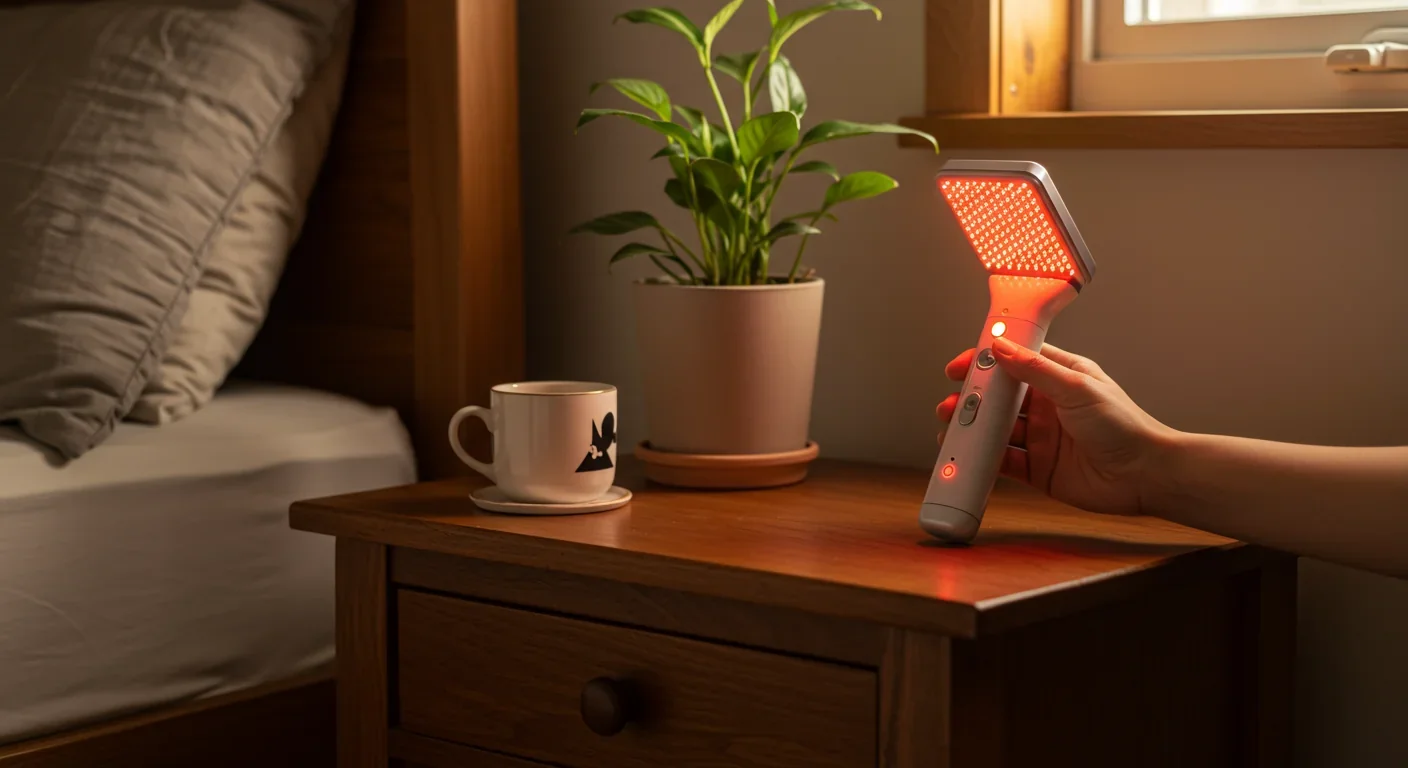
Environmental and e-waste concerns: LED panels consume electricity and rely on rare earth elements for manufacturing. As devices proliferate, so does electronic waste. If PBM becomes as ubiquitous as smartphones, the environmental footprint could be substantial without sustainable manufacturing practices.
The "quantified self" trap: PBM's integration into wellness culture risks pathologizing normal aging. If every wrinkle or ache becomes a condition requiring treatment, we may lose acceptance of natural biological processes. The relentless pursuit of optimization can itself become a source of stress, undermining the very wellness PBM promises.
In South Korea, red light therapy has been embedded in K-beauty routines for over a decade. LED masks are sold in major drugstores alongside sheet masks and serums, reflecting cultural comfort with technology-driven skincare. Korean dermatologists commonly prescribe home-use devices post-procedure to accelerate healing, integrating PBM into mainstream medical practice.
Japan takes a more clinical approach. The country's aging population—nearly 30% over 65—has driven demand for non-invasive therapies. Japanese researchers lead in transcranial PBM studies for dementia and stroke recovery, with government-funded trials exploring preventive applications. Red light therapy is often administered in medical settings rather than homes, reflecting cultural trust in professional oversight.
In Europe, particularly Germany and Scandinavia, PBM is framed within integrative medicine. Clinics combine red light therapy with physiotherapy, acupuncture, and naturopathy, viewing it as one tool in a holistic toolkit. Regulatory standards are stricter—devices must carry CE certification, and therapeutic claims require clinical evidence. This results in fewer but higher-quality products on the market.
The United States presents a paradox. PBM research output is globally dominant, yet consumer adoption lags behind Asia. Americans remain skeptical of non-pharmaceutical interventions, associating light therapy with New Age wellness rather than evidence-based medicine. However, the biohacking movement—concentrated in Silicon Valley and Austin—is changing this, treating PBM as a performance enhancer rather than therapy.
In developing regions, PBM remains largely inaccessible due to cost. However, initiatives like NASA's LED technology transfer program aim to bring affordable wound-healing devices to underserved areas. If manufacturing costs drop and solar-powered devices emerge, PBM could address burn treatment and chronic wounds in low-resource settings.
As PBM becomes mainstream, several competencies will become valuable:
Photobiology literacy: Understanding wavelengths, irradiance, fluence, and the biphasic dose curve will separate informed consumers from those wasting money on ineffective devices. Expect future physicians to prescribe PBM with the same specificity they now prescribe medications—"Use 660 nm at 50 mW/cm² for 10 minutes, three times weekly."
Device evaluation skills: Learn to scrutinize specifications. Does the manufacturer list actual measured irradiance at typical treatment distances, or just peak output at 6 inches? Are wavelengths verified by independent spectrometry? Is EMF emission tested? Consumer advocacy will drive transparency, but individual due diligence remains essential.
Integration into routines: PBM works best with consistency. The most successful users build it into existing habits—10 minutes with a handheld wand during morning coffee, or evening LED panel sessions while reading. Sporadic use yields sporadic results.
Collaboration with healthcare providers: As PBM research matures, primary care physicians and specialists will need to advise patients on appropriate use. If you're considering PBM for a specific condition, bring peer-reviewed studies to your doctor. Medicine is shifting toward shared decision-making, and informed patients accelerate evidence-based adoption.
Advocacy for standardization: Support efforts like the World Association of Laser Therapy (WALT) to establish dosing guidelines. The field needs consensus on optimal protocols for each indication—similar to physical therapy having standardized exercises for specific injuries.
Ready to try photobiomodulation? Here's how to do it safely and effectively.
Step 1: Identify your goal. Different wavelengths serve different purposes. For anti-aging and acne, prioritize 630–660 nm red light targeting the epidermis and dermis. For muscle recovery, joint pain, or athletic performance, choose 810–850 nm near-infrared for deep tissue penetration. For comprehensive treatment, select a device combining both (e.g., 660 nm + 850 nm).
Step 2: Verify device specifications. Demand these details from manufacturers:
- Wavelength accuracy: Should be ±5 nm of claimed output, verified by spectrometry
- Irradiance (power density): Look for 20–100 mW/cm² for facial devices, 50–200 mW/cm² for body panels, measured at your intended treatment distance (usually 6–12 inches)
- Total power output: Higher wattage doesn't guarantee better results—distribution and wavelength matter more
- FDA clearance: Check 510(k) database for legitimate Class II clearance
- EMF emission: Should be <10 mG at treatment distance
- Beam divergence: LEDs spread light in a cone (~74° divergence); lasers focus it. LEDs are safer for home use; lasers should be used professionally.
Step 3: Calculate your dose. Use the formula: Dose (J/cm²) = Irradiance (mW/cm²) × Time (seconds) ÷ 1,000. For example, a device at 50 mW/cm² used for 6 minutes delivers 18 J/cm². General guidelines:
- Superficial tissues (skin): 5–20 J/cm²
- Deep tissues (muscle, joints): 20–60 J/cm²
- Maximum safe daily dose: ~60 J/cm² (though individual tolerance varies)
Start conservatively—use 50% of the recommended time for the first week, then increase gradually.
Step 4: Optimize treatment protocols. Timing and frequency matter:
- Skin rejuvenation: 5–10 minutes, 3–5 times weekly for 4–6 weeks
- Athletic recovery: 10–20 minutes immediately post-workout or before bed
- Pain management: 10–20 minutes, 2–3 times daily on affected area
- Circadian regulation: 10 minutes of red light in the morning for energy; 20 minutes before bed for sleep
- Consistency beats intensity: daily low-dose exposure often outperforms sporadic high-dose sessions
Step 5: Monitor and adjust. Track results in a journal. Note skin texture changes, pain levels (1–10 scale), sleep quality, and energy. If you see no improvement after 4 weeks, reassess your dose—you may be under- or over-treating.
Step 6: Combine with other therapies. PBM enhances topical skincare (serums penetrate better post-treatment), physical therapy (accelerates tissue healing), and cold therapy (red light before ice reduces inflammation more than either alone). Some users pair red light with breathing exercises—light for 10 minutes, then 5 minutes of diaphragmatic breathing before applying sunscreen.
Troubleshooting common issues:
- Headaches after use: Likely from bright LED exposure without eye protection. Use goggles or close eyes during facial treatments.
- Skin irritation: Reduce session length or move device farther away to decrease irradiance.
- No results: Check device output with an independent meter (solar power meters often overestimate by 30–100% due to calibration for sunlight). Ensure you're using correct wavelength for your goal.
- Inconsistent heating: LED output often decays during the first 3 minutes of use, dropping to 50% of initial power in some devices. Allow 30-second cooldown between sessions if reactivating immediately.
Safety checklist:
- Never direct light at eyes without protection
- Avoid treating tattoos (may fade or irritate)
- Do not use on thyroid area (neck) without medical guidance
- Avoid if pregnant, have active cancer, or take photosensitizing medications
- Keep sessions under 30 minutes to prevent burns
- Ensure device doesn't exceed 200 mW/cm² (thermal damage risk)
Device recommendations by use case:
- Budget facial device: Look for FDA-cleared handheld wands with 630–660 nm, ~65 mW/cm², and 3-minute auto-timers
- Full-body panel: Wall-mounted panels with 660 nm + 850 nm, 70–90 mW/cm², and 300+ LEDs
- Targeted pain relief: Portable wrap-style devices combining LEDs and low-level lasers for deep penetration, with adjustable straps for mechanical contact
- Sleep/mood: Red-amber bedside lamps (no blue light) or 658 nm whole-body beds if accessible
PBM stands at an inflection point. Within the next decade, we'll likely see:
Precision dosing algorithms: AI-driven apps that analyze your skin type, tissue depth, and condition to recommend personalized wavelength, irradiance, and duration—eliminating guesswork.
Integration with wearables: Imagine a smartwatch that measures your inflammatory biomarkers and prompts: "Your CRP is elevated. Consider a 15-minute 850 nm session." Or fitness trackers that optimize PBM timing around your circadian rhythm for maximum ATP production.
Combination therapies: PBM is already being studied alongside stem cell treatments, regenerative medicine, and pharmacotherapy. Future protocols may "prime" tissues with red light before drug delivery to enhance absorption.
Regulatory evolution: As clinical evidence solidifies, expect the FDA to approve (not just clear) PBM devices for specific indications—perhaps starting with diabetic wound healing or osteoarthritis. This would enable insurance coverage and accelerate mainstream adoption.
Expanded brain applications: If transcranial PBM proves effective for Alzheimer's or depression in large trials, we could see helmet-style devices prescribed as first-line therapies, reducing pharmaceutical dependence.
Sustainability innovations: Solar-powered PBM devices for developing regions, and recycling programs for LED panels as they reach end-of-life.
Yet challenges remain. The field needs standardized dosing guidelines, rigorous long-term safety studies, and mechanisms to prevent predatory marketing. Without these, PBM risks becoming another overhyped wellness trend rather than a pillar of evidence-based medicine.
The most profound shift, though, may be philosophical. PBM forces us to reconsider the boundary between treatment and enhancement. If a 40-year-old uses red light to maintain the collagen levels they had at 30, are they treating aging or optimizing biology? If an athlete uses PBM to recover faster, is that therapy or performance enhancement? These questions will grow more urgent as biotechnology blurs the line between fixing what's broken and upgrading what works.
One thing is certain: light, the most ancient form of energy on Earth, is being rediscovered as medicine for the modern age. Just as Prometheus brought fire to humanity, transforming civilization, photobiomodulation may be bringing light itself into our cells—illuminating a future where healing doesn't require pills or scalpels, but simply the right wavelength, delivered at the right moment, to the right tissue. That future is already here. The question is whether we'll use it wisely.
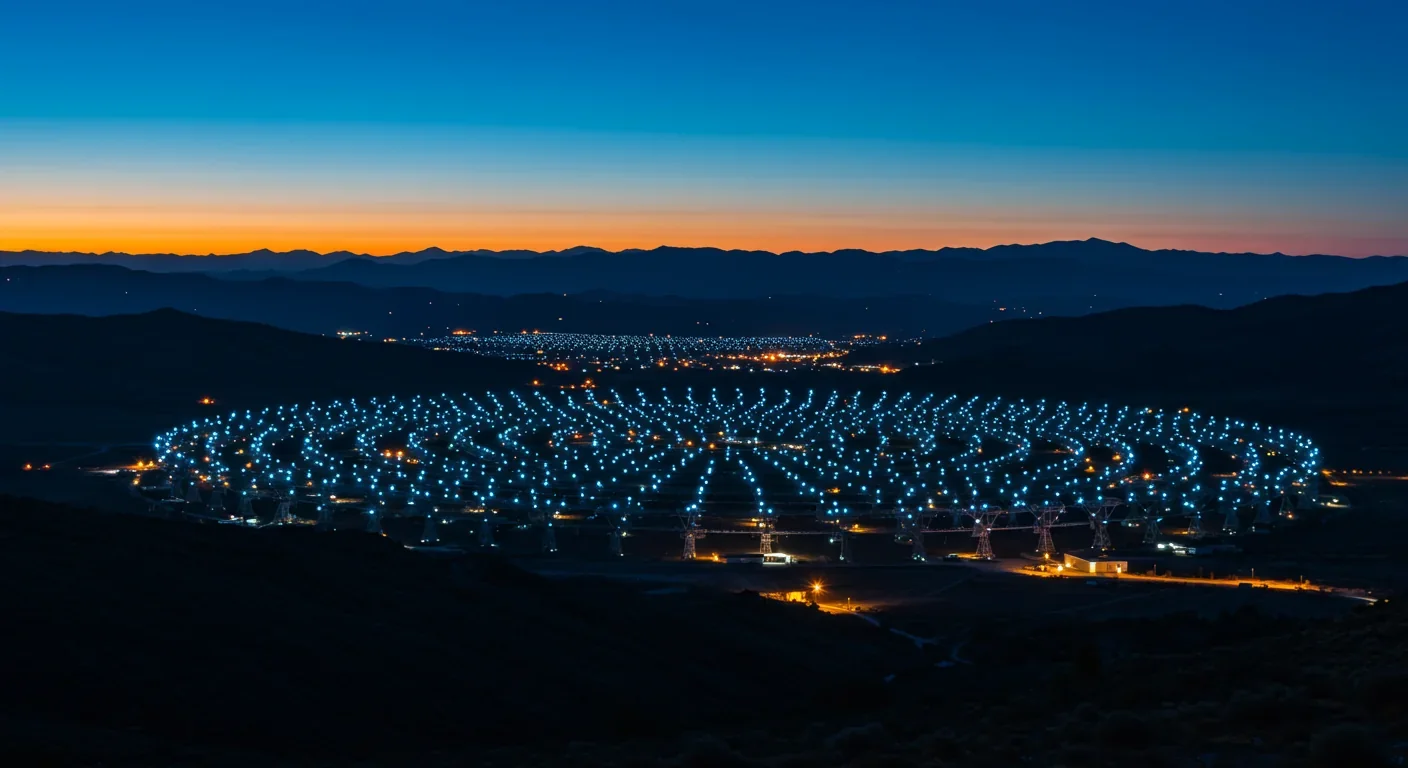
Fast Radio Bursts—millisecond flashes from distant galaxies releasing more energy than the Sun in days—have evolved from cosmic oddities into powerful tools. Advanced telescopes like CHIME now detect dozens weekly, tracing origins to specific galaxies and even individual stars. Magnetars, ultra-magnetized neutron stars, are confirmed sources, yet mysteries abound: repeaters in dead galaxies, second-scale periodicities, and absence of X-ray counterparts. FRBs now map invisible baryons, measure...

Scientists are revolutionizing gut health by identifying 'keystone' bacteria—crucial microbes that hold entire microbial ecosystems together. By engineering and reintroducing these missing bacterial linchpins, researchers can transform dysfunctional microbiomes into healthy ones, opening new treatments for diseases from IBS to depression.

Marine permaculture—cultivating kelp forests using wave-powered pumps and floating platforms—could sequester carbon 20 times faster than terrestrial forests while creating millions of jobs, feeding coastal communities, and restoring ocean ecosystems. Despite kelp's $500 billion in annual ecosystem services, fewer than 2% of global kelp forests have high-level protection, and over half have vanished in 50 years. Real-world projects in Japan, Chile, the U.S., and Europe demonstrate economic via...

Our attraction to impractical partners stems from evolutionary signals, attachment patterns formed in childhood, and modern status pressures. Understanding these forces helps us make conscious choices aligned with long-term happiness rather than hardwired instincts.

Crows and other corvids bring gifts to humans who feed them, revealing sophisticated social intelligence comparable to primates. This reciprocal exchange behavior demonstrates theory of mind, facial recognition, and long-term memory.

Cryptocurrency has become a revolutionary tool empowering dissidents in authoritarian states to bypass financial surveillance and asset freezes, while simultaneously enabling sanctioned regimes to evade international pressure through parallel financial systems.
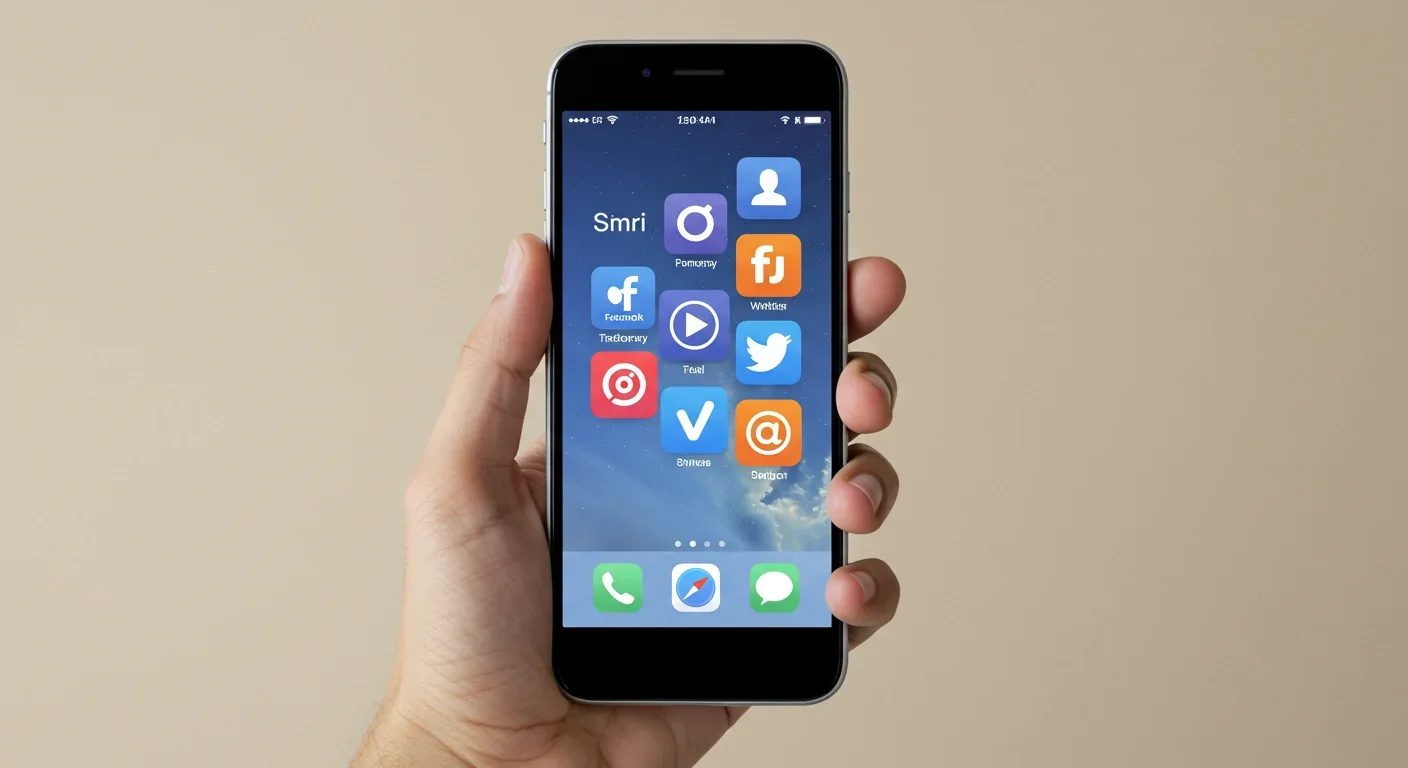
Blockchain-based social networks like Bluesky, Mastodon, and Lens Protocol are growing rapidly, offering user data ownership and censorship resistance. While they won't immediately replace Facebook or Twitter, their 51% annual growth rate and new economic models could force Big Tech to fundamentally change how social media works.